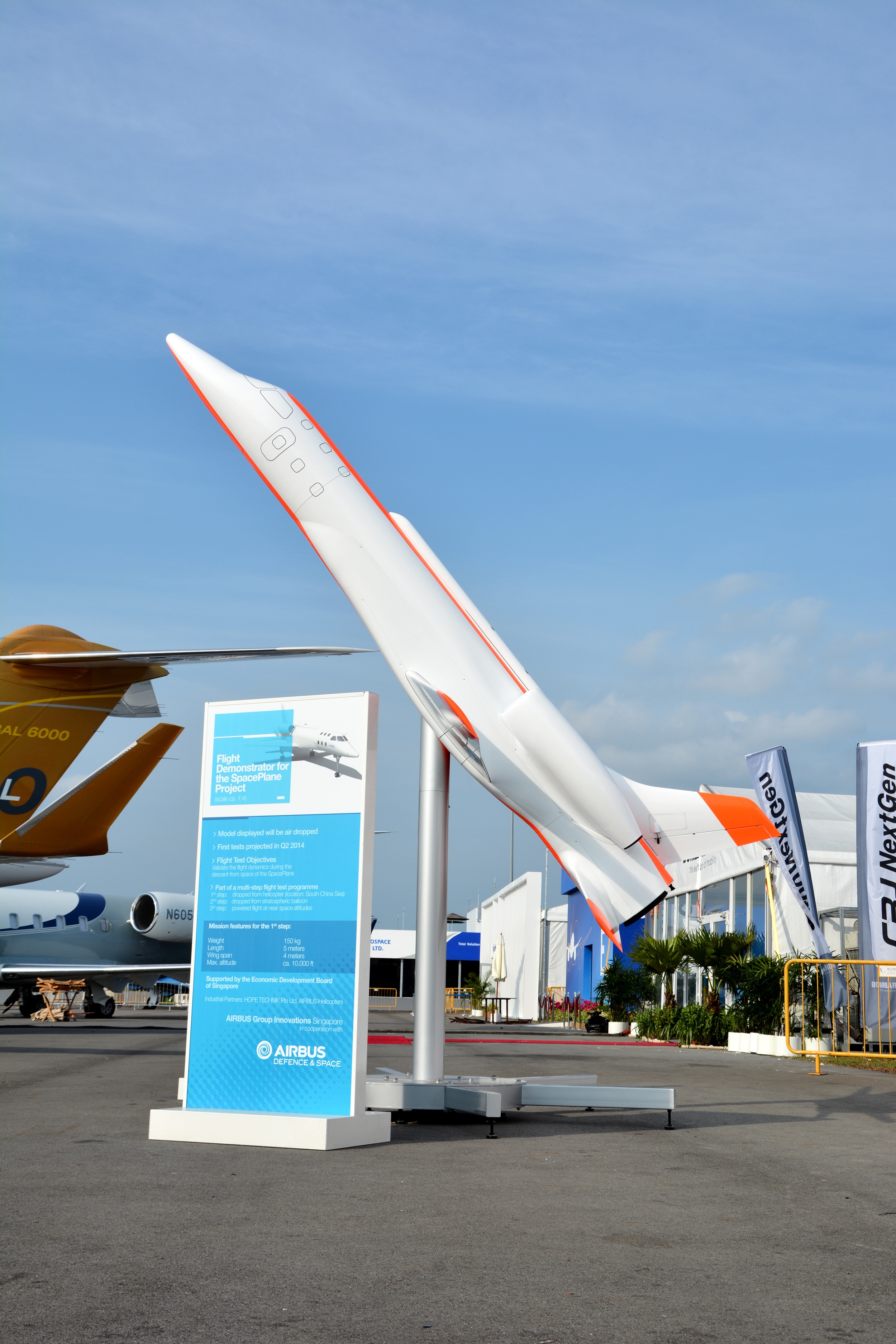Spaceplane: Suborbital Vehicle for Space Tourism & Science

The Spaceplane is a European vision to bring cargo or paying passengers into suborbital space, for science or operational reasons. The vehicle, being developed by Airbus, Europe's biggest aerospace manufacturer, is intended to carry four passengers as high as 100 kilometers (62 miles) by taking off and landing at a conventional airport.
The vehicle will operate in between the usual altitude of airplanes and satellites, Airbus stated, which will open up a different market. The space plane could be used as a "point-to-point" transfer service or instead do experiments and work in an area of space not heavily occupied by other vehicles.
During a typical flight, a rocket engine will ignite at about 12 km (7.5 miles) to bring it up to the operational flight. Weightlessness will last for "some minutes" at the top of the flight arc. The plane will then slow down and ignite the engines again for a landing on a runway.
While the plane underwent an in-atmosphere flight test in 2014, the company has not released a launch date. It says that it could be possible to get into space "about seven years after procuring development financing."
Development history
Development of the plane began in 2006 by Astrium, then a subsidiary of European Aeronautic Defence and Space Company (EADS). At the time, Astrium was known for the Ariane rocket that has taken dozens of satellites into space. Astrium was the prime contractor for the European Space Agency's Automated Transfer Vehicle (ATV), an unmanned spacecraft that takes cargo to the International Space Station. Astrium also was the prime contractor for the station's Columbus module.
The global economic crisis delayed some of the work on the plane as of 2011, according to the BBC, but the company was quoted as saying they had done development on the rocket engine, and aerodynamic wind tunnel testing.
"We keep the investment going," said Astrium CEO François Auque in the report. "We continue to mature the concept, maintaining the minimum team, in order that when we find the relevant partnership we are ready and have progressed sufficiently," Auque said in the BBC report.
As of June 2011, a consortium of Singapore companies had joined the development team, according to a Flightglobal report. At the time, Astrium officials said they were seeking more partners before establishing the project commercially.
Reorganization and further work
In 2014, EADS restructured and reorganized itself as the Airbus Group in response to (some media reports said) competitive pressure by its main competitor, SpaceX. The Airbus Defence & Space division includes what was previously known as Astrium.
In June 2014, Airbus tested a quarter-scale demonstrator off the coast of Singapore. The demonstrator flew as high as 3 km (1.86 miles) and was piloted from a barge, according to the publication The Engineer.
Airbus has kept fairly quiet about development plans. Once development gets going, though, the target is to produce five aircraft every year and eventually have a fleet of 30-plus aircraft within a decade, according to Airbus. Flights will cost about $225,000 per passenger.
Additional resources
Join our Space Forums to keep talking space on the latest missions, night sky and more! And if you have a news tip, correction or comment, let us know at: community@space.com.
Get the Space.com Newsletter
Breaking space news, the latest updates on rocket launches, skywatching events and more!

Elizabeth Howell (she/her), Ph.D., was a staff writer in the spaceflight channel between 2022 and 2024 specializing in Canadian space news. She was contributing writer for Space.com for 10 years from 2012 to 2024. Elizabeth's reporting includes multiple exclusives with the White House, leading world coverage about a lost-and-found space tomato on the International Space Station, witnessing five human spaceflight launches on two continents, flying parabolic, working inside a spacesuit, and participating in a simulated Mars mission. Her latest book, "Why Am I Taller?" (ECW Press, 2022) is co-written with astronaut Dave Williams.










